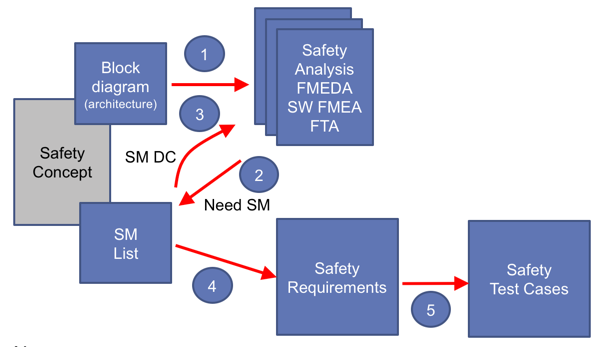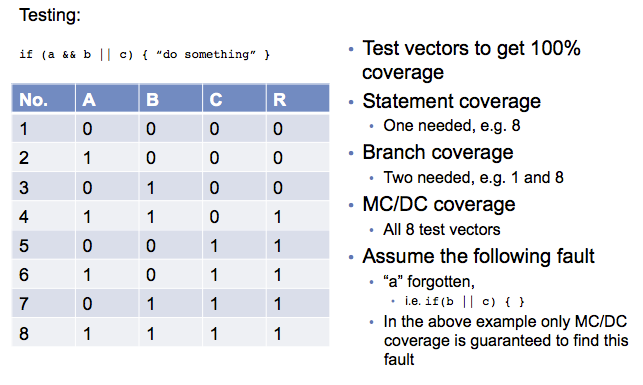Before defining a SPICE or ISO 26262 process, consider the the role of the processes in the architecture of the quality system. A useful quality system will consist of several items that will work together to provide rules and guidance for what to do. You should consider developing these items:
- Process overview
- Individual processes
- Guided templates
- Guidelines
- Good examples
The process overview should provide and overview of all process, work product, roles and responsibilities. The overview should also define lifecycle and tailoring rules.
Processes should not be written to assume a certain lifecycle. Especially the engineering processes should be written to define activities need to achieve the expected outputs (work products) from defined inputs. If the process is applied in a waterfall approach or an agile (highly iterative) approach should be dealt with in the lifecycle part of the quality system.
Each process should have the following elements:
- Process objectives
- Input work products
- Key activities
- Output work products with responsibilities
- Guidance
- Training material
Novotis defines process objectives as a set of review criteria for the output work products. In this way the SPICE requirements for both process objectives and review criteria can be satisfied in a simple manner. These high level review criteria (5 – 10 points) can be replaced by more detailed checklists as needed.
The input and output work products provide the links between processes. A process should refine one or more key work products into new work products. Novotis tend to focus on the key work products of a process, e.g. requirements specification, design specification or test specification / report.
The list of work products in SPICE is very ambitious, Novotis have never seen any company use all these work products. The list of work products in ISO 26262 is more realistic but may not match what a SPICE compliant company already has in place.
Novotis recommends that before starting with writing the process, the company reviews the process and work product it is using (will use) and adapt the work product and process structure to fit company needs.
Novotis typically focus responsibilities on the work products, i.e. responsibility for creating, approving and reviewing work products.
Most of the variation in the processes are in the description of key activities. As the quality system will have guided templates Novotis believes it is most appropriate to have an activity focus in a process. At the same time a process may be used in different life cycles and therefore a flow chart type process may be too restrictive for most process, exceptions would be change control and problem resolution management.
Process should define the minimum needed activities to ensure quality outputs. Process should also be usable as a basis for quality assurance. This normally requires more activities than practices defined in SPICE. To cover SPICE and ISO 26262 requirements would require 20 – 30 activities in a process like requirements analysis.
Process should not be seen as training material for new developers. For that we may have guidance and training material. These can be more focused on ”how to” do while the process should focus more on ”what to do”.
Novotis normally uses a shorter guidance section in process where limited guidance (1 – 2 pages) is needed and will create a separate guideline for processes where more extended guidance is needed.



